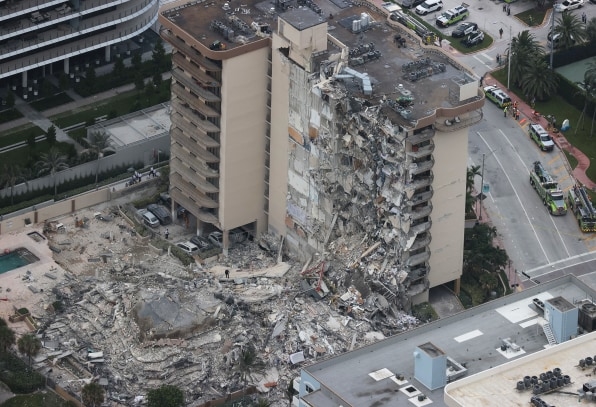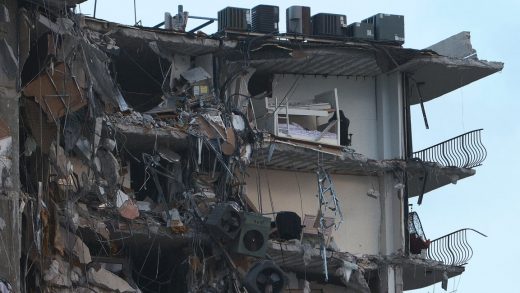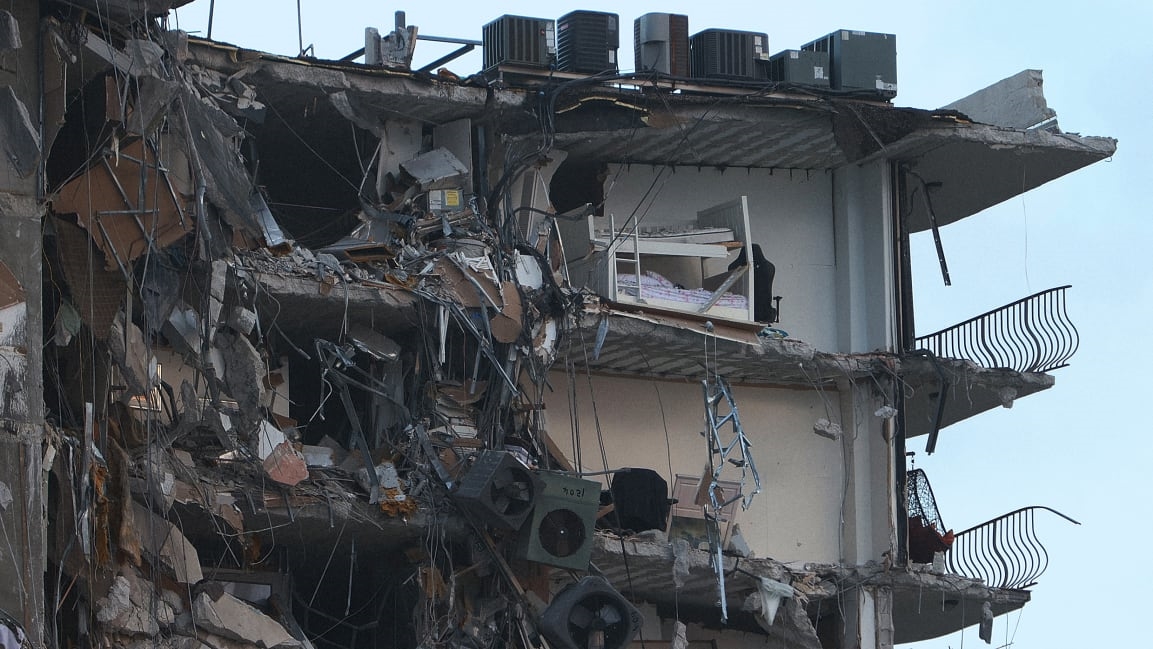Why buildings collapse
Just after 1 a.m. Thursday, a sudden, unexpected, and devastating structural failure occurred in Surfside, Florida, when a large section of a 12-story condominium building collapsed. A short distance from the shore north of Miami Beach, the Champlain Towers South Condo’s southeast corner simply fell, bringing 55 of the building’s 136 units to the ground in seconds. Security camera footage from a nearby building shows the structure falling straight down, in two separate chunks, as if the ground underneath had slipped away.
At this time, four people are confirmed dead, and more than 100 remain unaccounted for as emergency crews and dogs search for survivors in a pile of debris two stories high. Photos show a grisly scenario. In one, part of a top-floor unit ripped open like a cutaway doll house, revealing a set of bunk beds teetering on the edge, empty. (See this article for ways you can help victims of the building collapse.)
Why the building collapsed is not yet known. David Darwin is a professor of civil engineering at the University of Kansas and an expert in reinforced concrete structures, and he says the eventual investigation of the Surfside collapse will explore all the potential causes, ranging from movement in the foundation before the collapse, corrosion in the debris, and excessive cracking in the part of the building that remains standing. “There are all sorts of potential causes of failure,” Darwin says. “At this point, speculation is not helpful for anybody.”
Nevertheless, concrete structures like the Miami condo may look sturdy, but they have been known to fail. There was the 2018 collapse of part of a bridge in Genoa, Italy, which killed 43 people and displaced 600 people from damaged homes. And in New Orleans, in 2019, an 18-story Hard Rock Hotel collapsed mid-construction due to what were later found to be insufficiently strong floor beams and shoddy structural steel connections.

These structural failures are rare but potent examples of problems inherent in concrete and how people use it to build. Concrete is the world’s most used material. Dating back to ancient Rome when volcanic ash, rock, lime, and seawater were combined to form a formable rock-hard material, concrete has evolved over the years into more stable forms. Since the mid-1800s advent of reinforced concrete—concrete poured over cages of rebar, made typically of steel—the use of concrete has become more diverse, enabling towers to rise more than 160 stories and bridges to span more than 1,000 feet.
Due to its widespread use and long life span (typically about 100 years), concrete is often considered to be fail-safe, and aging buildings can be left to slowly decay to the point of potential danger. Some researchers argue that, contrary to its intended purpose, the rebar itself accelerates this decay, due to its vulnerability to moisture that can seep into concrete.
In the United States, for example, 42% of bridges are older than their designed lifetimes of 50 years, and 7.5% have been rated structurally deficient, according to a report from the American Society of Civil Engineers. Researchers have known for years that reinforced concrete structures face increased vulnerabilities due to climate change, with changing environmental conditions adding to their wear and tear. One culprit is chloride, a chemical compound in salty water that, when sprayed out of the ocean during tidal surges and hurricanes, can permeate into tiny cracks in concrete and erode the stabilizing connections with the reinforcing bars within.
Darwin says that corrosion can occur when not enough concrete is used to surround the reinforcement, and increasing concentrations of carbon dioxide in the air can accelerate this internal decay. “If there’s a corrosion problem,” he says, “they’ll be able to see it.”
Another problem with concrete is something referred to as “concrete cancer,” an alkali-silica reaction that can make buildings crack and expand. Experts in civil engineering have been advocating for wider adoption of new smart infrastructure technologies such as embedded sensors that can self-monitor the condition of roads and bridges. Similar approaches can also be used in buildings. Researchers are even developing concrete that can heal its own cracks by using an enzyme found in red blood cells, and new computer vision tools are being developed to automate structural and safety inspections.
As of now, no one is sure what caused the Surfside collapse. The mystery is how this building, constructed in 1981, could fall apart so much earlier than the generally expected 100-year life span of concrete buildings.
Miami-Dade County, where Surfside is located, has a 40-year building-recertification policy, which requires buildings to be inspected to ensure their structural integrity. In hurricane-prone Florida, where wind, water, and sea are among the natural elements that can wear away at any material, the inspections are intended to prevent this kind of disaster from ever happening.
According to reports from the Miami Herald and The New York Times, residents reported experiencing shaking and vibrations in the building last year during the construction of another building nearby. Maintenance on the building’s roof was also underway. It’s unclear if or how these are related to the collapse.
The building was also known to be slowly sinking, according to a report from USA Today. Research conducted last year by Florida International University researchers found that the building was subsiding at a rate of about 2 millimeters a year in the 1990s. Professor Shimon Wdowinski, who led the research, called this amount of movement “unusual.”
Darwin credits the continued evolution of building codes with ensuring these kinds of calamities don’t happen more often. “Reinforced concrete, structural steel, timber, these are not locked in some sort of ancient historical design mode,” he says. “We continue to improve our approaches on design with an emphasis on safety of the structure and protecting the individuals who are using those structures.”
Darwin says there’s unlikely to be any smoking gun. A full investigation on this type of collapse could take a year, he says. Until that can be completed, the cause of the Surfside building collapse will remain unknown. And though it’s unlikely that concrete buildings will start spontaneously collapsing at high rates, the disaster in Florida underscores the need for the building industry to begin integrating new technologies and systems. Because even though a building or bridge seems to be built to last, every material has its vulnerabilities.
(39)



